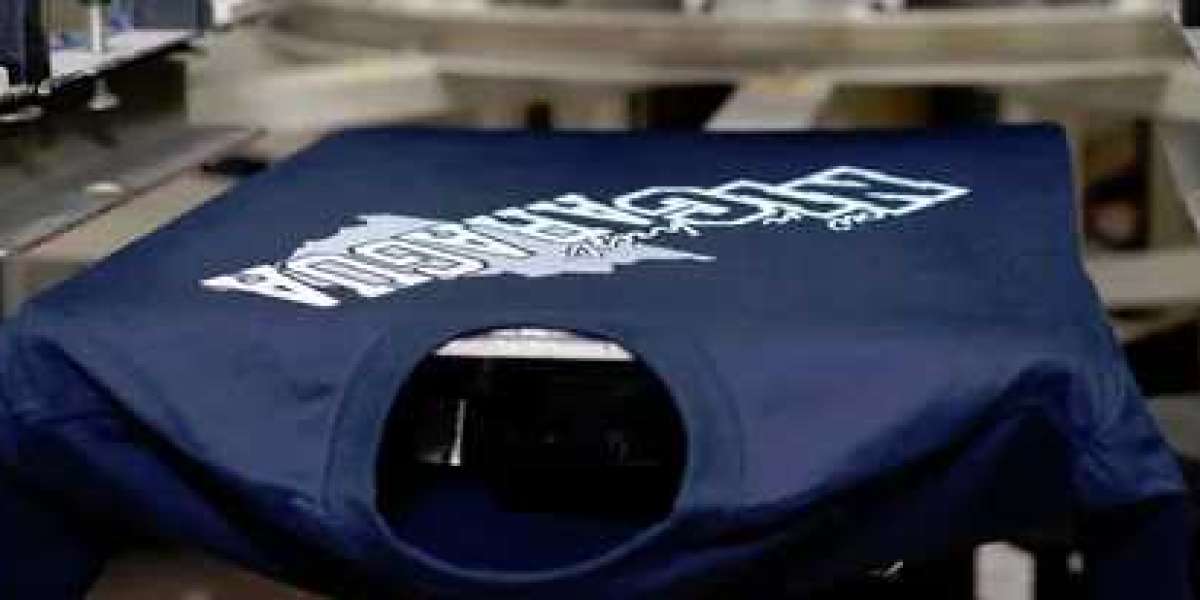Why T-Shirt Logo Printing is Essential for Branding
1. Boosts Brand Recognition
Tshirt logo printing allows businesses to create wearable advertisements. When employees, customers, or event attendees wear your branded t-shirts, they act as walking billboards, spreading awareness wherever they go. Research shows that branded apparel increases customer recall and enhances trust in a company.
2. Creates a Sense of Team Unity
Companies and organizations often use custom t-shirts to foster a sense of belonging among employees. A unified look not only improves professionalism but also enhances team spirit. Whether for corporate events, sports teams, or non-profits, logo t-shirts create a shared identity.
3. Cost-Effective Marketing
Compared to digital advertising, which requires ongoing investment, custom logo t-shirts offer a long-lasting promotional tool. A well-designed t-shirt can be worn for years, providing continuous brand exposure without recurring costs.
Choosing the Right Printing Method
When it comes to t-shirt logo printing, different techniques offer varying levels of durability, color vibrancy, and cost-effectiveness. Let's break down the most popular methods.
1. Screen Printing
Screen printing is one of the most widely used methods for t-shirt logo printing due to its durability and high-quality finish. It involves creating a stencil (screen) and using it to apply layers of ink to the fabric.
Pros:
Long-lasting and durable
Ideal for bulk orders
Vibrant colors
Cons:
Limited color options per design
Higher setup costs for small orders
2. Direct-to-Garment (DTG) Printing
DTG printing uses inkjet technology to print designs directly onto fabric. This method allows for intricate designs and a wide range of colors.
Pros:
Great for detailed and colorful designs
No minimum order quantity
Soft feel on fabric
Cons:
Less durable compared to screen printing
More expensive for bulk orders
3. Heat Transfer Printing
This method involves printing a design onto a special transfer paper and then using heat to transfer the image onto the fabric.
Pros:
Ideal for small batches
Works well for complex, multi-color designs
Affordable for short-term promotional use
Cons:
Prone to fading and cracking over time
Not as durable as screen printing
4. Embroidery
For a premium look, embroidery offers a textured and sophisticated finish. While not technically "printing," embroidery is a popular method for corporate apparel and uniforms.
Pros:
Highly durable
Elegant and professional appearance
Works well on polo shirts and jackets
Cons:
More expensive than traditional printing
Limited to simple designs
Tips for Creating the Perfect Logo T-Shirt
1. Choose the Right Fabric
Selecting the right fabric is crucial for the longevity of your custom logo t-shirt printing. Cotton and cotton blends are popular choices due to their comfort and print compatibility.
2. Optimize Your Design for Printing
Ensure your logo is in high resolution (at least 300 DPI) and in a print-ready format (PNG, AI, or EPS). Simple, bold designs with limited colors work best for screen printing, while DTG is ideal for complex and colorful graphics.
3. Consider Your Target Audience
Think about who will be wearing your t-shirts. A fun and vibrant design might appeal to a younger audience, while a minimalist approach could work better for corporate settings.
4. Work with a Reputable Printing Service
Choosing an experienced t-shirt printing service ensures high-quality results. Look for customer reviews, sample works, and turnaround times before making a decision.
Conclusion
T-shirt logo printing is a game-changer for businesses, events, and personal branding. By choosing the right printing method, optimizing your design, and selecting high-quality materials, you can create eye-catching t-shirts that leave a lasting impression. Whether you're printing shirts for a promotional campaign, a corporate event, or a creative project, the right approach will ensure your brand stands out in style.











